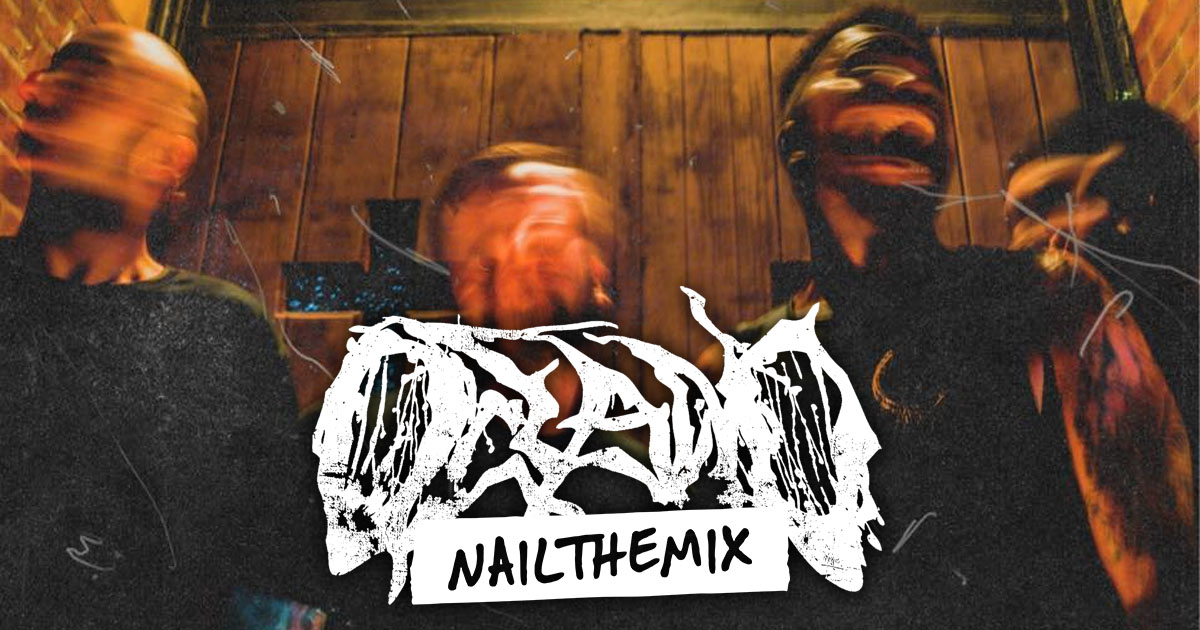
Best Free Music Mixing Software For Metal Producers
Nail The Mix Staff
You’re staring at your DAW, the mix is… fine. But it doesn’t have that punch, that clarity, that professional sheen you hear on your favorite records. The first thought? “I need better plugins.” You hit Google, type in "best free music mixing software," and get buried under a mountain of "Top 10" lists.
We get it. But let’s reframe the question.
The truth is, getting a massive, crushing metal mix isn't about having a folder stuffed with 100 esoteric, expensive plugins. It's about having the right tools for the job and, more importantly, the skills to use them.
The biggest secret? You can get 90% of the way there with software that costs you absolutely nothing. Let’s break down what actually matters and which free tools will give you the most bang for your… well, for your zero bucks.
Your DAW’s Stock Plugins Are Better Than You Think
Before you even download a single third-party VST, let's talk about the arsenal you already have. The stock EQ, compressor, reverb, and delay that came with your DAW (Reaper, Logic Pro X, Pro Tools, Cubase, etc.) are incredibly powerful.
Think of it this way: give a world-class chef basic ingredients like flour, water, salt, and yeast, and they'll bake you an incredible loaf of bread. Give a beginner the most expensive, artisanal ingredients in the world, and you’ll probably get a doorstop.
It’s the same with mixing. A pro mixer like Jens Bogren or Nolly Getgood could deliver a banger mix using nothing but stock plugins because they have the skills. They know what needs to be done, why it needs to be done, and how to use the tool in front of them to do it. The specific brand of EQ is far less important than knowing you need to carve out 400Hz from your rhythm guitars to make room for the snare.
The bottom line: Your first and most important step is to master the tools you already own. Don't blame the tools; level up your skills.
The Free Mixing Tools You Actually Need
Okay, so stock plugins are your foundation. But what if you need a specific tool for a specific job? This is where a few well-chosen freebies can make a huge difference. Forget collecting 20 different compressors. Here’s a minimal, viable toolkit of free software that will have a real impact on your metal mixes.
The "Must-Have" Freebies for Any Metal Mix
These are the utility players—the tools that help you make better decisions and solve common problems.
Metering (Voxengo SPAN)
You can't fix what you can't see. SPAN is a free spectrum analyzer that should live on your master bus. It gives you a visual representation of your mix's frequency content.
Why it's essential for metal:
- Finding Mud: Instantly see a buildup in the 200-500Hz range where your guitars, bass, and kick drum are fighting for space.
- Taming Harshness: Spot those nasty, ice-pick frequencies in cymbals or fizzy guitars (often around 3-8kHz) that make your mix fatiguing.
- Bass Management: Visually confirm that your kick drum fundamental and your bass guitar's root notes aren't sitting right on top of each other, creating a cloudy low end.
Surgical EQ (TDR Nova)
While your stock EQ is great for broad strokes, sometimes you need a scalpel. TDR Nova is a parallel dynamic EQ. In simple terms, it's an EQ that can react to the audio, cutting or boosting only when a certain frequency crosses a threshold.
Why it's a game-changer:
- De-essing Vocals: Tame harsh "s" sounds in your screaming vocals without making them sound dull the rest of the time.
- Controlling Palm Mutes: Got that "woof" on heavy palm mutes? Set up a dynamic band in Nova to dip the low-mids just on those chunky hits, leaving the rest of the guitar tone untouched.
- Taming Snare Ring: Find that annoying snare ring (say, around 900Hz) and use Nova to dip it only on the loudest hits, preserving the snare’s body and tone.
To get these surgical moves right, you need a solid understanding of how to EQ modern metal like a pro, using precise cuts to create space in a dense mix.
Character Compression (Klanghelm MJUC jr.)
Your stock compressor is likely a clean, digital workhorse. But sometimes you want a compressor that adds a bit of color, glue, and vibe. The MJUC jr. is a variable-mu style compressor that’s dead simple and sounds fantastic.
How to use it:
- Drum Bus: Use the "Slow" setting with just a few dB of gain reduction to gently glue your drum kit together and add a little punch.
- Bass Guitar: Put it in "Fast" mode to even out a dynamic bass performance and add some pleasing harmonic saturation.
Compression is one of the most misunderstood parts of mixing. It’s not just about volume. To truly master it, check out our deep dive into using an audio compressor for crushing metal mixes.
Saturation (Softube Saturation Knob)
Sometimes a track sounds too clean or sterile. This is where you need to understand what audio saturation is and how it adds the grit and harmonics that make a metal mix feel huge. The Softube Saturation Knob is a fantastic, simple tool for this job.
Actionable uses:
- Lifeless Bass DI: Slap it on your bass DI and turn it up. Use the "Keep High" setting to add some aggressive grind to the mids without turning the low end to mush.
- Sterile Synths: Add warmth and body to synth pads or leads to help them sit better in a rock/metal context.
- Parallel Vocals: Blend in a heavily saturated vocal track underneath your main vocal to add aggression and excitement.
The Game Changers: Free Amp Sims & Drum Tools
This is the one area where the specific tool really matters. No amount of EQ can turn a bad guitar tone into a good one. For metal, your amp sim and drum samples are the heart of your sound.
Guitar Amp Sims
Your guitar tone starts here. And while the quality of free amp sims is insane these days, it’s about building the entire signal chain. For a complete overview, see our guide to the best guitar plugins for a massive metal tone.
- ML Sound Lab Amped Roots Free: Based on a killer high-gain amp, this one is a go-to for modern metal tones right out of the box.
- Ignite Amps Emissary: A modern classic in the free plugin world. It’s tight, aggressive, and perfect for down-tuned chugs. You’ll also need an impulse response (IR) loader like Ignite’s own NadIR to pair it with a cabinet sound.
- Amplitube 5 CS: IK Multimedia’s free version gives you a handful of amps, cabs, and pedals. It’s a great way to experiment with different tones.
Drum Samples & Triggers
In modern metal, a punchy, consistent drum sound is non-negotiable. If your raw drum recordings aren’t cutting it, you’ll need to explore some killer drum sample replacement techniques to add punch while maintaining a human feel.
- Slate Trigger 2 Free: This is a limited but functional version of the industry-standard drum replacement tool. It comes with a few great kick and snare samples that can instantly elevate a weak drum sound. Blend the kick sample underneath your real kick for a consistent low-end punch, and layer the snare sample to add crack and body.
The Trap of "Plugin Acquisition Syndrome"
We’ve all been there. You see a producer you admire using a fancy new plugin, and you think, "That's the missing piece!" You buy it, install it, and… your mixes sound exactly the same.
This is Plugin Acquisition Syndrome (PAS). It’s the belief that the next plugin will be the magic bullet. In reality, it leads to decision paralysis. Staring at 15 different EQs and 20 different compressors doesn’t make you a better mixer; it just wastes time.
The cure? Minimalism.
Pick one workhorse EQ (your stock one is perfect).
Pick one workhorse compressor.
Learn them inside and out. Your mixes will improve ten times faster than if you had a hundred plugins you barely understood.
Beyond the Plugins: What Really Makes a Pro Mix
So, if it’s not the plugins, what is it?
It’s the decisions. It's knowing that the guitars and vocals are fighting, and understanding that you need to use EQ to carve a pocket for the vocal to sit in. It's hearing that the kick drum gets lost after the first hit, and knowing how to use compression to give it a consistent punch.
Watching a pro like Eyal Levi or Will Putney mix a track isn’t about copying their plugin chain. It’s about understanding their mindset. It’s about seeing them identify a problem and knowing exactly which tool—and which technique—to use to solve it. That's the skill that separates the pros from the amateurs.
This is what we do at Nail The Mix. We don’t just show you what plugins to use; we show you why a world-class producer is making every single move. You get the raw, multitrack session from a massive metal song and watch the original producer mix it from scratch, explaining their entire thought process.
Ready to go beyond just collecting plugins? Learn to mix modern metal like a pro and discover the essential producer’s guide to crafting huge tracks that define your unique sound.







